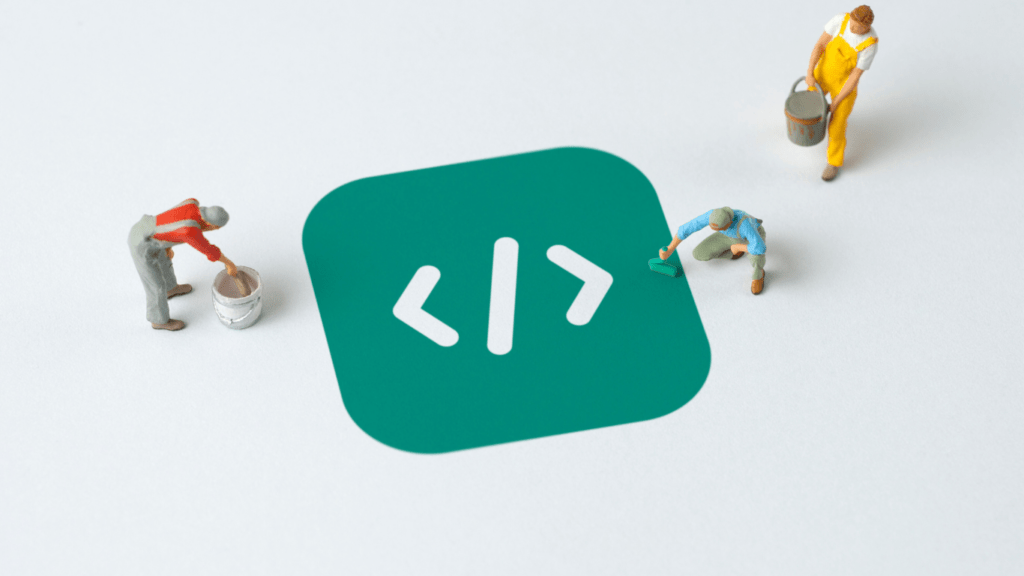Understanding No-Code and Low-Code Platforms
No-code and low-code platforms are redefining software development by lowering technical barriers and enabling faster application creation. These tools cater to diverse users, from business professionals to developers, driving innovation across industries.
What Are No-Code Platforms?
No-code platforms allow users to build software applications without writing code. These platforms use visual interfaces, drag-and-drop tools, and pre-configured modules to design applications. Examples include platforms like Bubble, Wix, and Shopify. Non-technical users can quickly create websites, automate workflows, or build apps using these tools, speeding up project completion and reducing costs.
What Are Low-Code Platforms?
Low-code platforms blend visual development with some coding, enabling users with technical knowledge to build more customized solutions. These platforms support advanced functionalities through hand-coding, making them a preferred choice for developers working on scalable enterprise applications. Tools like OutSystems, Mendix, and Microsoft Power Apps facilitate complex integrations and provide flexibility while maintaining high development speed.
Key Differences Between No-Code and Low-Code
| Feature | No-Code Platforms | Low-Code Platforms |
|---|---|---|
| Target Audience | Non-technical users | Developers and technical users |
| Coding Requirement | No coding needed | Some coding required |
| Customization Level | Limited customization | High customization |
| Use Cases | Simple apps, websites, automation flows | Enterprise solutions, complex apps |
| Learning Curve | Minimal learning curve | Moderate learning curve |
No-code platforms prioritize simplicity and speed for straightforward projects, while low-code platforms offer more control and adaptability for larger, complex developments.
Advantages of No-Code and Low-Code Platforms

No-code and low-code platforms are redefining how applications are built. They make development faster, more affordable, and accessible to a broader audience.
Accessibility for Non-Developers
These platforms eliminate the barrier of technical expertise. By using drag-and-drop interfaces, pre-built components, and intuitive workflows, individuals without programming knowledge can create apps or websites. For example, entrepreneurs use no-code tools like Wix to launch businesses, while professionals employ Bubble for customized interfaces. This accessibility empowers non-developers to bring ideas to life independently.
Faster Development Time
No-code and low-code tools significantly reduce the time required for app development. Traditional development involves lengthy coding and debugging phases, but these platforms streamline the process. With features like template libraries, automated testing, and visual designers, users can create functional prototypes within hours instead of weeks. Startups and SMEs utilize these tools to expedite product development cycles and stay competitive.
Cost-Effectiveness for Businesses
Businesses save resources by using no-code or low-code solutions. Hiring developers or outsourcing software projects can be expensive, but these platforms cut labor costs by enabling in-house teams to build apps. For instance, SMBs leverage tools such as Shopify to set up eCommerce stores without investing in custom development. The scalability of these platforms also ensures businesses can add features as their needs evolve without heavy financial commitments.
Limitations and Challenges
While no-code and low-code platforms offer numerous advantages, they also face critical limitations that impact their usability and effectiveness. These challenges can affect:
- flexibility
- scalability
- security
Flexibility and Customization Constraints
No-code platforms often limit users to pre-designed templates and modules. This approach works well for basic applications but restricts the ability to implement unique or advanced features. For example, integrating niche APIs or creating fully custom functionalities can be challenging or impossible without direct coding. Low-code platforms offer more flexibility, but users still depend on platform-specific tools and frameworks, which may not cover every customization need.
Scalability Issues
Applications built on these platforms frequently encounter scalability bottlenecks as project complexity grows. For instance, a no-code app handling a small user base may perform adequately but struggle with large-scale data processing or surging traffic demands. Platform-imposed restrictions on server capacity, database configuration, or advanced performance optimizations can limit the long-term growth of such applications.
Security and Compliance Concerns
Relying on third-party platforms places critical data security in another entity’s hands. Many no-code and low-code platforms don’t provide detailed control over encryption, data storage, or compliance with strict industry regulations like GDPR or HIPAA. This makes it difficult for businesses operating in highly regulated sectors to meet their requirements while using these tools. Vulnerabilities within the platform itself may also expose applications to cyber risks.
Do You Still Need to Learn Programming?
The rise of no-code and low-code platforms has transformed software development, but the need for programming skills hasn’t disappeared entirely. While these tools make application development more accessible, traditional coding remains critical in specific contexts.
Programming Skills in the Era of No-Code/Low-Code
- Understanding programming even at a basic level enhances platform usage.
- Knowledge of logic, algorithms, and data structures helps users design more efficient workflows.
- In low-code environments like Microsoft Power Apps, supplementing visual tools with custom scripts can achieve advanced functionality unavailable through drag-and-drop alone.
- Advanced programming skills also enable seamless integrations between systems, providing unique solutions for businesses.
Situations Where Coding Is Still Essential
Coding remains critical for scenarios requiring full customization or complex functionality. Enterprise-level applications often demand scalability and performance optimizations, which no-code and low-code platforms struggle to meet. Developers also play a key role in creating entirely new technologies, such as machine learning systems or blockchain platforms, which require expertise beyond pre-defined tools.
Specific industries, such as fintech and healthcare, have strict compliance and security standards, making it necessary to build custom code for data privacy and regulatory adherence. Open-source projects, AI development, and game design are other areas that frequently require a hands-on coding approach.
Balancing Learning Code and Using Platforms
Combining programming with no-code and low-code tools maximizes productivity. By understanding coding, users can address the limitations of pre-configured modules and enhance functionality with bespoke features. For instance, a developer might use OutSystems for rapid prototyping but customize specific components using JavaScript or SQL.
I recommend prioritizing programming education if your goals include long-term adaptability in the tech industry. Learning to code empowers users with the flexibility to move beyond platform restrictions, ensuring you’re equipped to tackle both simple and advanced development challenges.


